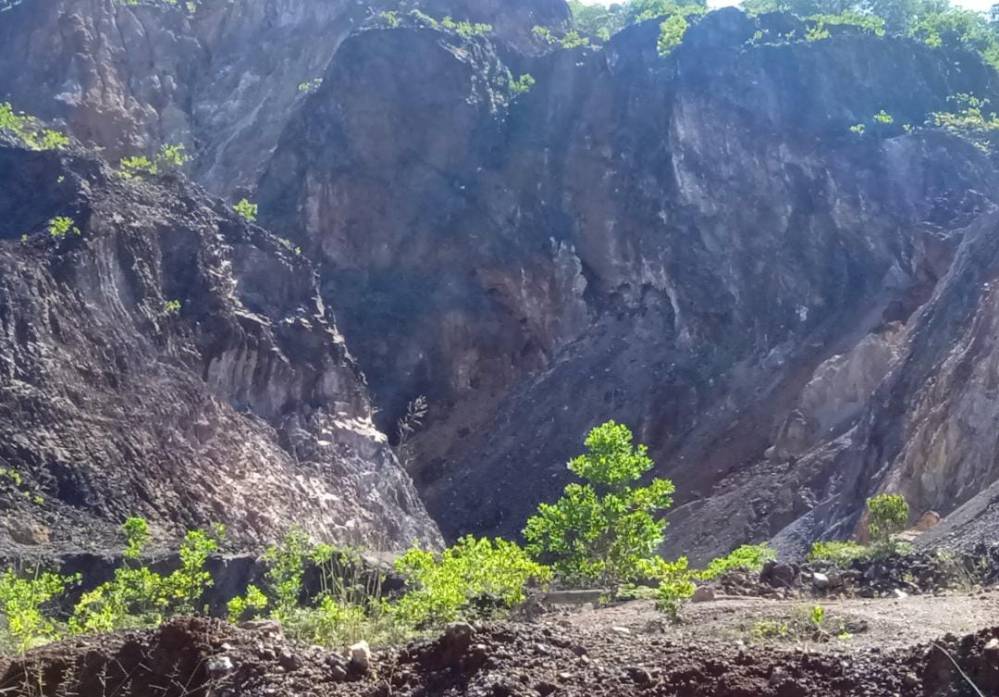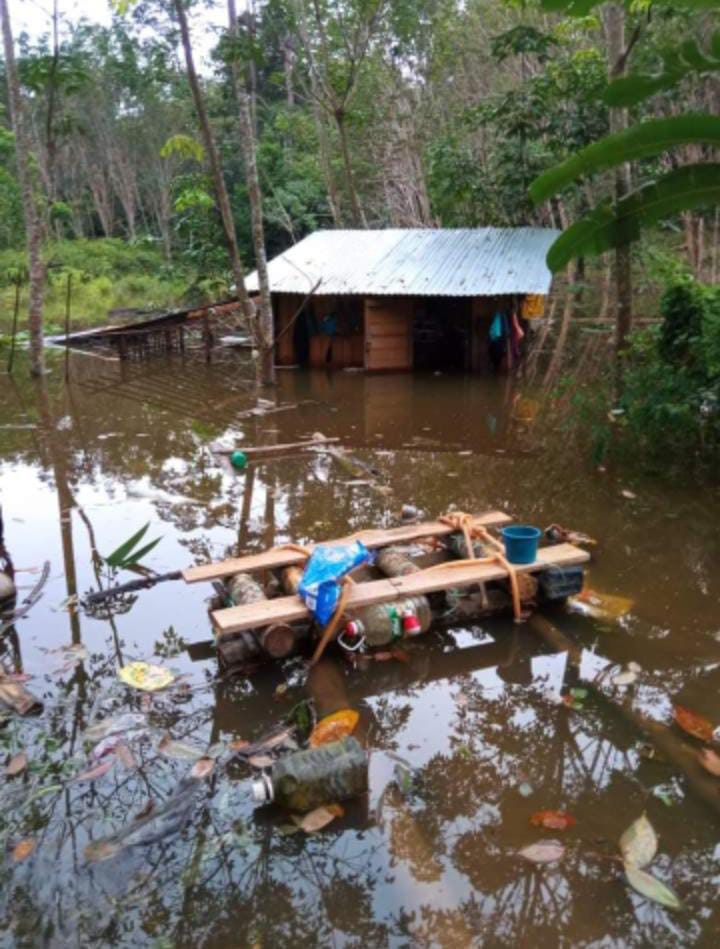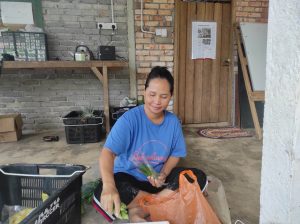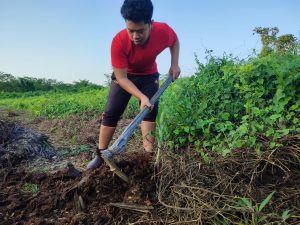Once upon a time, Tasik Chini was home to the Naga Seri Gumum, a legendary dragon in Malay folklore. However, today, the lake adorned with floating lotus flowers is slowly losing its water. The once-thriving forests that surrounded it now conceal their secrets, and the once-visible wildlife has vanished.

Tasik Chini’s status as a UNESCO Biosphere Reserve is currently under threat due to the alarming rate of deforestation in the area[1]. Over the past two decades, Malaysia has lost approximately 29% of its forest cover, amounting to a staggering 8.67 million hectares of biodiverse rainforest[2]. This loss is primarily driven by the expansion of commercial agriculture, particularly palm oil cultivation and mining activities.
One group profoundly affected by the destruction of trees is the Jahai people, whose ancestors have inhabited and protected the jungle for centuries. Today, the villagers living near Tasik Chini face an overwhelming challenge in preserving their traditional way of life. The impact of deforestation on these communities can be categorized into five major aspects, significantly affecting their well-being.
#1: Traditional Livelihoods Are Jeopardised
The indigenous communities residing near Lake Chini heavily rely on the abundant biodiversity surrounding them for their livelihoods. Seliah, a Melai villager, reminisced about a time when accessing forest resources was much easier.
When I was little, life was luxurious. I would search for rattan and gather resin (damar). – Seliah, villager[3]
However, as the forest cover diminished, obtaining rattan, which was utilized for arts and crafts, became increasingly challenging.
Nowadays, even if we wanted to make a living by supplying rattan, there simply isn’t enough left. The income-generating opportunities from the forest have significantly dwindled. – Maimun, villager[3]
Lake Chini was once a captivating tourist attraction, renowned for its glistening waters and mysterious ambiance. Regrettably, due to escalating development in the area, tourists no longer flock to the region.

Chini Lake used to be incredibly beautiful, attracting a multitude of tourists. But now, it’s a mere shadow of its former self. The tourists have vanished, and so has the essence of Lake Chini. – Noraini, villager[3]
#2: Slow Decay Of Cultural Heritage
Each community takes pride in its traditional cuisine. In the Melai village, dishes like ikan bungkus (wrapped fish) are gradually disappearing from household dinner menus. Abas, one of the village elders, expresses sorrow over the difficulty of sourcing the unique ingredients that give the dish its distinctive flavor.

The serengom leaves, kulim fruits, and skins used for ikan bungkus are becoming increasingly scarce as they are only found in the forest. Unfortunately, there is not much left in the forest. – Pak Abas, Melai villager
In Kampung Ulu Gumum, Jaafar, also known as Pak Ngah Rafar, recollects a time when the knowledge of herbal remedies was widely shared among the community. Today, such knowledge is only passed down by the elders. Furthermore, certain roots like the akar resdung, akar sembelit, and akar kayu rempah are no longer plentiful in the neighboring forest.
#3: Conflicts Over Land Rights

As of 2022, only 30.6% of Orang Asli’s land is legally recognized as theirs[4]. These communities have been engaged in ongoing battles to protect their ancestral lands, with some succeeding while others have faced displacement and eviction.
The communities surrounding Tasik Chini have not been spared from such struggles. Haniz, a Melai villager, recounts a story where the community found themselves at a disadvantage.
10 years ago, an ore mining company wanted to clear the fruit trees and rubber plantations cultivated by the Melai community. They only paid RM7 for a rubber tree. It wasn’t worth the price and would only harm the community in the long run. – Haniz, Melai villager[5]
Despite substantial evidence of indigenous communities as early settlers, including cemeteries, remnants of sacred places, and forest trees planted by their ancestors, these historical connections often pale in comparison to the weight of legal documents that determine land ownership.
In a united effort to defend their ancestral lands, the Orang Asli communities have resorted to placing “No Entry” sign boards, serving as a deterrent to intruders and the empty promises of redevelopment[5].
#4: Polluted Water Sources And Poor Health
The river used to be our playground. We caught fish and played in the water. – Jaguh, Melai villager

In years past, the Melai forest flourished, and the flowing river provided sustenance for the community. However, in 2011, the entry of development into the village brought about detrimental changes.
Due to soil erosion caused by the development, the once-deep river became shallow, leading to the emergence of scabies in the fish and depriving the villagers of its nourishment.
Even the fishes in Lake Chini, have become ill and their scales to become scabies. We don’t even dare to eat the fish. – Maimun, Melai villager [5]
The river that meanders through the Melai and Ulu Gumum villages was formerly relied upon by the community for daily needs such as drinking, bathing, and washing clothes.
Due to mining works, water has become polluted. Getting clean drinking water has also become difficult. In the olden days, it was easily accessible. Those days we could just scoop the water and drink it. The river water was clear and pristine.– Seliah, Melai villager
Today, the river has become a health hazard, leading to waterborne diseases among the community and causing itching of the skin.
The water has become polluted – we can’t bathe with it nor drink it. – Seliah, Melai villager
#5: Forest Fires, Flooding And A Fiery Furnace
Rohani, a Melai villager, highlights that logging, iron mining, and the reduction of forest cover have contributed to the increased temperatures in her village.
Compared to 20 years ago, the heat is very different now. The heat from the sun wasn’t as intense as it is now. Previously, we could still enjoy the crisp air after the rain. However, the effect of ground heat is now different because the temperature is higher.– Rohani, Melai villager
The rise in ground temperature poses a greater risk of forest fires. Dry and arid conditions facilitate the rapid spread of fires, causing extensive land damage.

On the other hand, deforestation exacerbates the frequency and intensity of flooding. The loss of forest cover contributes to land erosion, which leads to the blockage of village drainage and obstructs water flow.
There’s a dam construction in Kuala Chini and the drains are clogged with rubbish thrown by irresponsible individuals. – Linggi, Melai villager
The occurrence of floods significantly disrupts the daily activities of the community, particularly those involved in farming.
When floods occur, the Orang Asli are unable to do their daily activities and jobs such as tapping rubber, farming, and searching for food in the forest. Farmers are upset because their crops were affected by flood water. – Linggi, Melai villager
SOURCES:
- UNESCO.Man and the Biosphere Programme (MAB) Link
- Global Forest Watch, 2022
- OA Organik. (2023). OA Voices 09: Forest Provision. Link
- Berita Harian. (2022) 10 peratus anak Orang Asli keciciran pendidikan. Link
- OA Organik. (2023). OA Voices 05: Fresh water.Link


